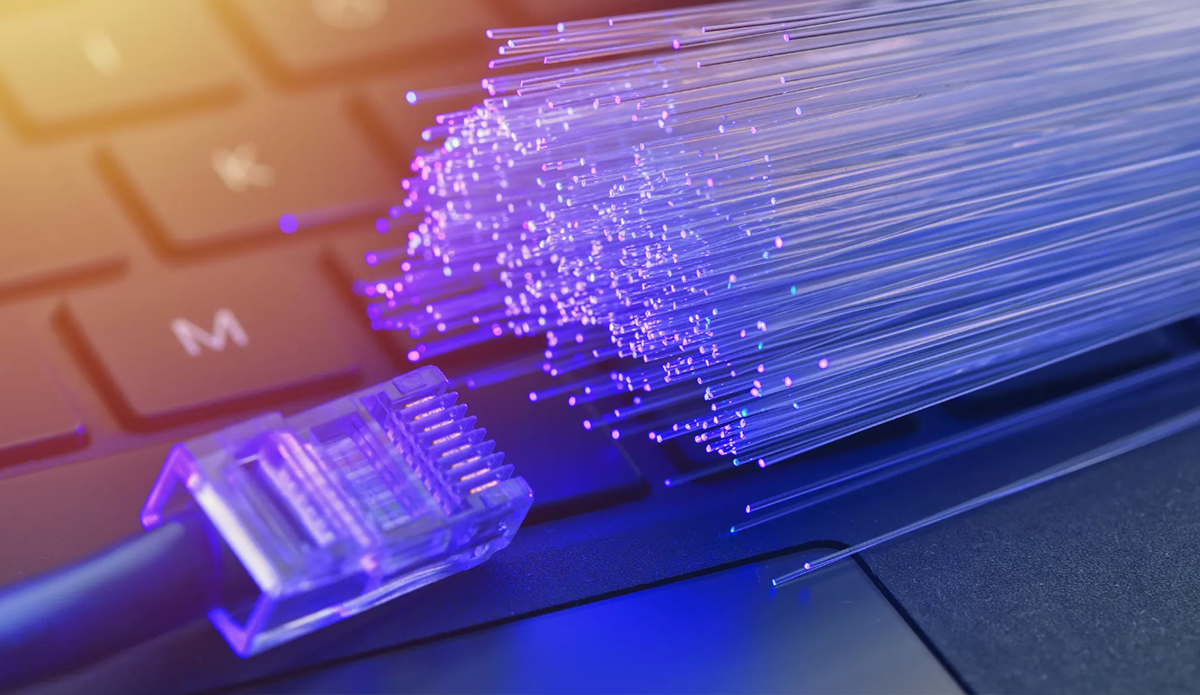Key points to know about fibre broadband
Fibre broadband is the next-generation broadband technology, changing the way we connect to the internet.
That said, it’s still not a completely perfect solution for everyone.
Read on to see our expert deep-dive into all the pro’s and con’s of choosing high-speed broadband.
We’ve explained all the drawbacks and positives below.
What is fibre broadband?
It provides high-speed internet access through a fibre-optic network, which uses light to transmit data.
This technology is far superior to traditional internet connections that uses copper wires, as it can offer speeds of up to 1Gbps, making it one of the fastest and most reliable forms of broadband available.
Instead of copper wires, fibre infrastructure uses thin plastic or glass strands.
Most suppliers nowadays also offer fibre broadband only deals, meaning you don’t need your landline bundled in anymore either!
See what makes fibre so revolutionary below:
The undeniable pro’s of fibre broadband
Here are some reasons to switch from ADSL to fibre broadband:
Speed
Fibre broadband offers much faster speeds than ADSL, with speeds of up to 1Gbps, making it ideal for homes and businesses that require fast and reliable internet access. This is especially important for activities that require a lot of bandwidth, such as online gaming, streaming high-definition video, and downloading large files.
Reliability
Fibre broadband is more reliable than ADSL, as the fibre-optic network is not affected by interference from other devices and provides a stable connection without any dropouts or interruptions. This makes it ideal for businesses that need a dependable internet connection for critical operations.
Security
Fibre broadband is more secure than ADSL, as the fibre-optic network is much harder to tap into, making it more difficult for hackers to steal sensitive information. This is especially important for businesses, which are often required to protect sensitive data.
Environmental friendliness
Did you know that fibre broadband is more environmentally friendly than ADSL? Fibre-optic cables are made of glass, which is a renewable resource, and do not emit harmful electromagnetic fields like traditional broadband cables. 70% less energy is needed to transmit the same amount of data though a fibre cable, in comparison to a standard copper wire. Using less energy means less heat is generated, meaning that equipment doesn’t need to be kept cool. This drastically reduces the network’s carbon emissions.
Future-proof technology
High-speed, reliable Wi-Fi is the next-generation broadband technology, and is the future of connectivity. By switching to fibre, you can ensure that your home or business has access to the latest technology and will be able to keep pace with future demands for high-speed internet.
With its high speeds, reliability, and the dedicated and consistent connection (instead of battling for bandwidth with other users during peak hours), you can understand how fibre appeals to busy homes and heavy internet users.
With this in mind, it’s important to know about the potential cons.
The drawbacks of fibre broadband
While fibre broadband offers many benefits, there are also some negatives to consider:
Cost
Fibre broadband can be more expensive than traditional broadband, especially for consumers who live in areas where fibre-optic networks have not yet been widely rolled out. The cost of installation and the cost of the service itself can be a barrier for some consumers.
Availability
Not all areas have access to fibre yet, especially rural and remote areas. This can leave some consumers with limited options for high-speed internet access.
Complex installation
The installation can be complex and time-consuming, and may require excavation and disruption to existing infrastructure. This can be a barrier for some consumers, especially those who live in urban areas where space is limited.
Limited service providers
In areas where fibre is available, consumers may only have access to a limited number of service providers. This can result in less competition and higher prices.
Technical difficulties
While fibre is generally more reliable than traditional broadband, there can still be technical difficulties with the fibre-optic network, such as power cuts or network issues, which can result in disruptions to your connection.
Our expert conclusion
Fibre broadband is the future of internet connectivity.
It’s the perfect choice for homes and businesses that require fast, stable and secure internet access.
So, if you want to stay ahead of the curve and enjoy the benefits of the latest technology, you should look into fibre deals near you.
Ready to make the switch?
If you are looking to upgrade your internet connection, we’ll help you find a low priced deal today.
High-speed Wi-Fi isn’t as expensive as it once was, and we’ve compiled deals from a wide range of suppliers.
Don’t get lost in competitors and endless quotes – search fibre offers in your area now.








